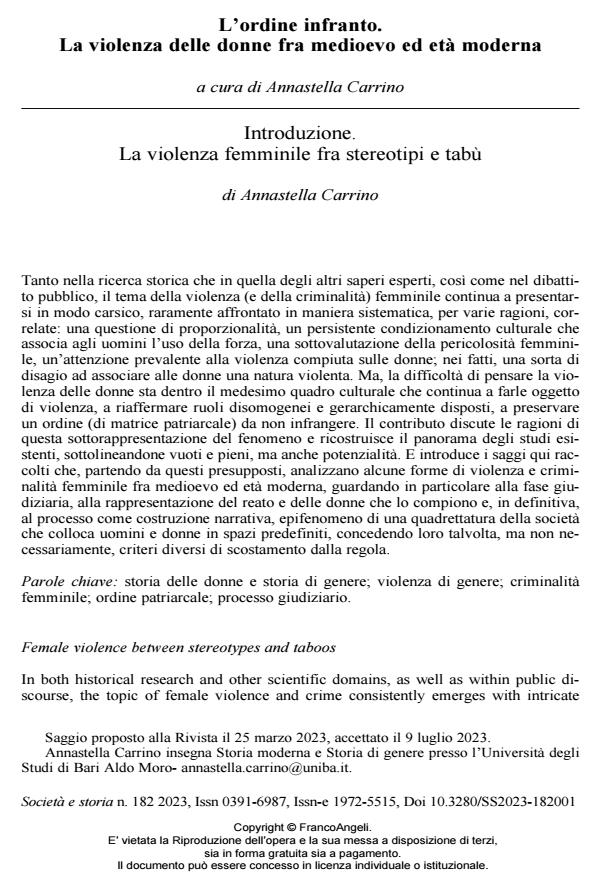Female violence between stereotypes and taboos
Journal title SOCIETÀ E STORIA
Author/s Annastella Carrino
Publishing Year 2023 Issue 2023/182
Language Italian Pages 14 P. 685-698 File size 140 KB
DOI 10.3280/SS2023-182001
DOI is like a bar code for intellectual property: to have more infomation
click here
Below, you can see the article first page
If you want to buy this article in PDF format, you can do it, following the instructions to buy download credits

FrancoAngeli is member of Publishers International Linking Association, Inc (PILA), a not-for-profit association which run the CrossRef service enabling links to and from online scholarly content.
In both historical research and other scientific domains, as well as within public di- scourse, the topic of female violence and crime consistently emerges with intricate nuances cass. is often touched upon, yet is seldom addressed in a comprehensive manner, primarily due to interconnected factors. These factors include considerations of proportionality, the enduring cultural predisposition linking men with the use of force, an underestimation of female capacity for harm, and a prevailing emphasis on violence inflicted upon women. This reluctance to associate women with a propensity for violence reflects a discomforting societal pattern, as the challenge of contemplating women’s engagement in violence is deeply entwined with the very cultural framework that continues to subject them to acts of violence. This framework perpetuates uneven and hierarchical roles, preserving an entrenched order of patriarchal origins. This order resists disruption. This study delves into the rationales behind this underrepresentation of the phenomenon and attempts an overview of existing studies, highlighting both their comprehensive contributions and their gaps. Moreover, it underscores the poten- tial inherent in studying this issue. This introduction sets the stage for the following collection of essays. These essays, grounded in the aforementioned premises, meticu- lously analyze the various manifestations of female violence and criminality spanning from the Middle Ages to the modern era. The focal points lie in the judicial phase, the portrayal of the criminal act and the women perpetrating it, and ultimately, the trial’s role as a narrative construct. This construct emerges as an epiphenomenon of the so- cietal framework that confines men and women to predefined spaces, at times affor- ding them distinct criteria for deviating from societal norms, albeit not invariably.
Keywords: women’s history and gender history;; gender-based violence;; female criminality;; patriarchal order;; judicial process.
Annastella Carrino, L’ordine infranto. La violenza delle donne fra medioevo ed età moderna. Introduzione. La violenza femminile fra stereotipi e tabù in "SOCIETÀ E STORIA " 182/2023, pp 685-698, DOI: 10.3280/SS2023-182001